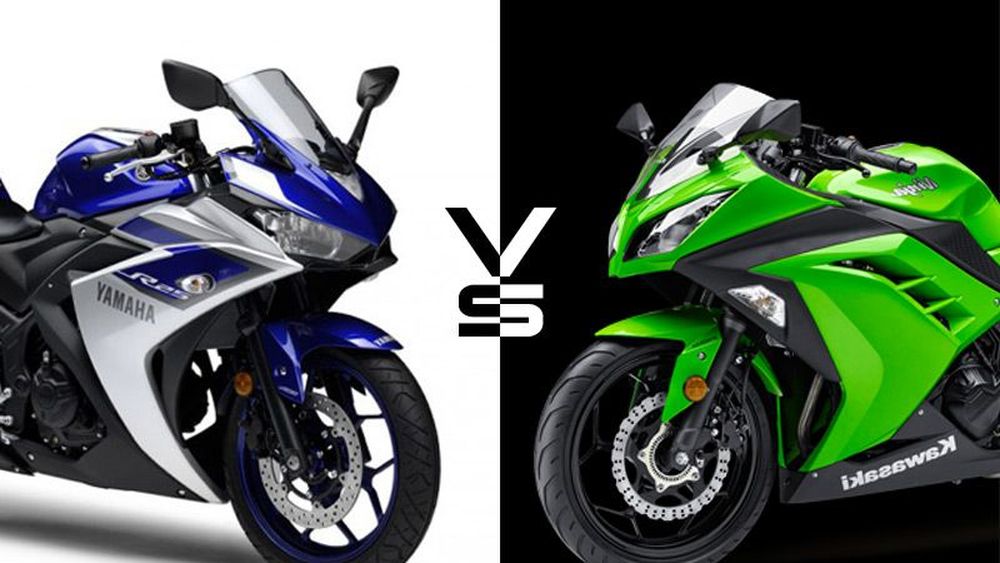
Competition in the sports motorcycle segment with a 250cc engine capacity is indeed very exciting. Yamaha to make the global debut of the latest generation of R25 in early October. Coming with a lot of new things, Yamaha R25 likes to be the answer to 4 years of waiting for fans.
Not until it arrived, Kawasaki was immediately issued, Ninja 250 version 2019 at the IMOS event. As the name implies, it was only marketed last January. Almost unique, because only last year Ninja increased total refreshment.
Kawasaki motorbikes Ninja 250 comes with various potentials to compete with its competitors. Anything?
Feature
Conscious of increasingly high consumer expectations, Yamaha embeds many features on the latest R25. The full digital indicator panel is one of the measurements of Yamaha’s modernization on the R25. The monochrome LCD information screen requires a large speedometer analog needle on the previous R25.
The fact is, the Ninja 250 still uses a combination instrument panel. The engine rotation analog is still on the side of the large enough LCD screen that can display a variety of driving information.
Yamaha has a unique starter button, which is an integrated button to turn on and extinguish the engine (engine disconnected). Unique indeed, but this is not related to the Ninja 250’s smart key feature that has been equipped with the Intelligent Proximity Activation Start System feature.
This system relies on sophisticated remote to access the motor center switch. This rotary knob can only be used using the remote or key selected. Only then the engine can be started through the ignition switch.
Another advantage that is valued by Ninja 250 from Yamaha R25, is the DC output feature. The power outlet can be used to recharge the smartphone battery. R25 doesn’t have this. The rest, both Yamaha R25 and Kawasaki Ninja 250 use similar features. Such as LED headlights and others.
Driving and controlling
To support driving stability, Yamaha completes the R25 with its telescopic forefoot (upside down). Ninja 250 still survives with the usual telescopic front suspension. But the diameter of the damping tube has been enlarged. Still, the reversed front foot of the R25 (upside down) provides better driving stability at high speeds.
Instead, Kawasaki provides sandals & helps clutch to replace anti-slip gear. Yamaha R25 must accept the benefits of Ninja 250 about this. Apart from that, nothing else is different. However it can still survive, free driving without technology, Throttle by Wire (TBW) as adopted by the Honda CBR250RR. Not yet supported with a choice of driving modes.
Ninja 250 is also available in a variant that features ABS (Anti-lock Brake System) safety features. Yamaha R25 does not have ABS brakes.
Engine Specifications
This needs to be considered, the selected engine specifications. The new Yamaha R25 uses a 249.6cc Blue Core 2-cylinder engine. The power produced is 36 PS at 12,000 rpm with peak torque of 23.6 Nm at 10,000 Rpm. Without using the VVA (Variable Valve Actuation) as used by R15, the DO25 R25 on paper cannot compete with its competitor’s power figures.
Kawasaki Ninja 250 still uses the same engine as before. Of course, this engine does not need to be changed, yet the Ninja 250 is still the owner of the largest power in its class. This 249cc 2-cylinder mechanical heart produces 39 PS of power at 12,500 rpm with peak torque of 23.5 Nm at 10,000 Rpm.
Conclusion
In conclusion, the Kawasaki Ninja 250 excels in many aspects. Ninja 250 is equipped with a smart key with Intelligent Proximity Activation Start System, ABS brakes and so on. Meanwhile, the Yamaha R25 is more stable at high speeds because it uses an inverted telescopic front suspension. But Kawasaki compensates with a flip & clutch assist. Ninja 250 engine performance is still superior to the R25.
Yamaha R25 looks behind, but in fact, there are advantages to competing with Ninja 250. The selling price is cheaper than its rivals.